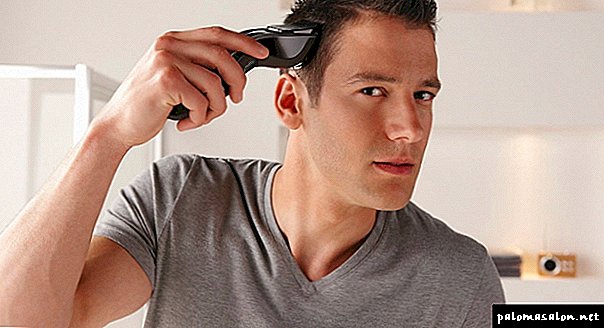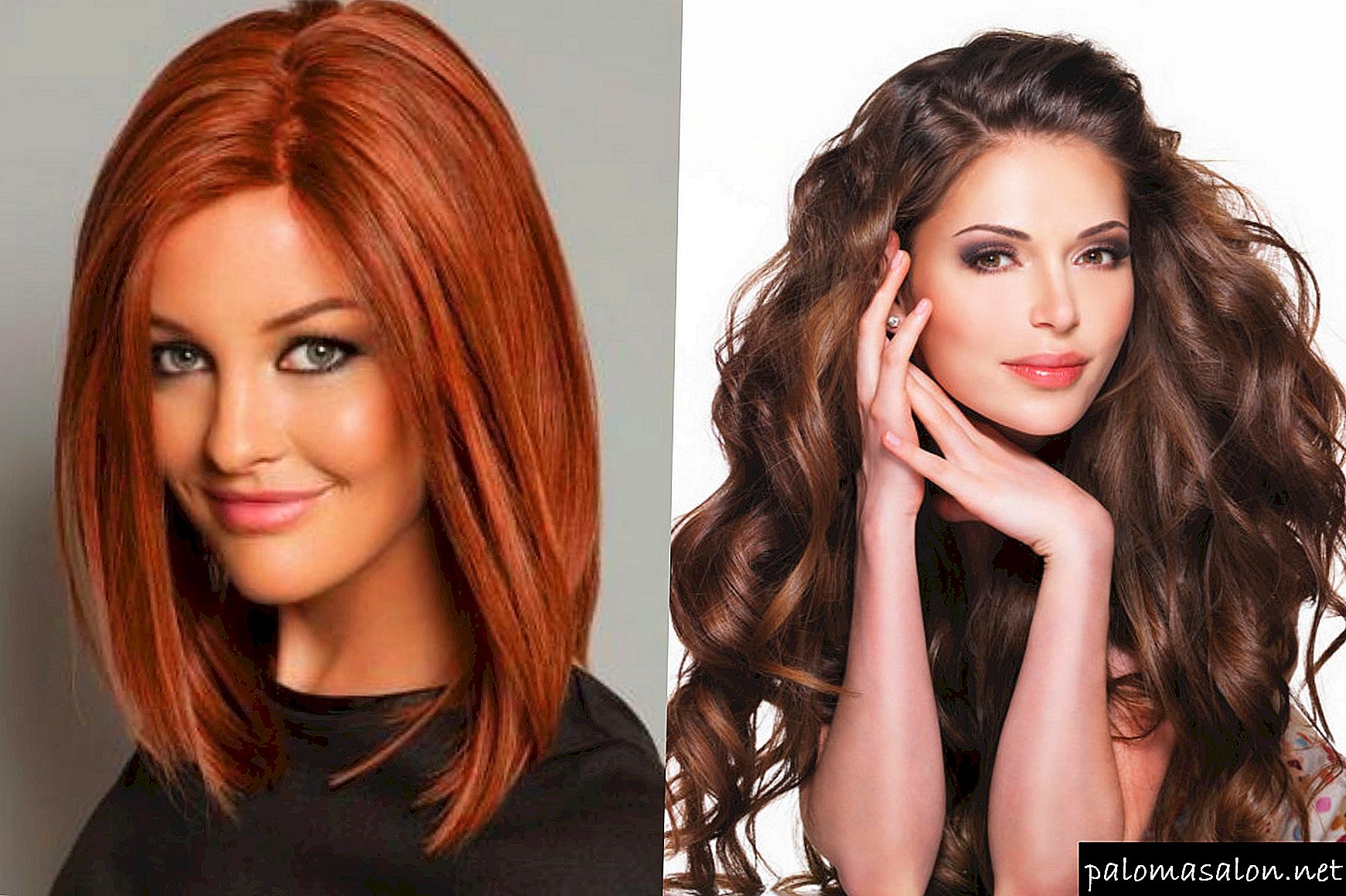
Seborrheic dermatitis is a disease that affects the skin of a person. It is mainly manifested on the face, head. The disease is characterized by inflammation of the skin as a result of impaired function of the sebaceous glands. Accompanied by a host of unpleasant symptoms. Doctors call this dermatitis eczemic seborrhea. Pathology can occur in both adults and children. The disease can provoke various complications, therefore, seborrheic dermatitis must be promptly treated. Therapy includes the use of drugs for external as well as internal use. It is important to remember that patients with a diagnosis of seborrheic dermatitis should be treated carefully. It is extremely important to avoid manifestations of allergic reactions.
The main causes and symptoms of eczema seborrhea
There are many factors that trigger the development of seborrheic dermatitis.
The main reasons are:
- weakening of the immune system
- stresses
- excessive sweating
- disturbed hormones,
- nervous system diseases
- hypothermia
- hypovitaminosis,
- poor nutrition,
- Parkinson's disease,
- problems with digestive organs.
Seborrheic dermatitis in adults may be associated with various diseases of the organs of the sexual, endocrine, and nervous systems, as a result of which a change in hormonal levels occurs. Symptoms of the disease depends largely on the type of seborrhea. There are mixed, dry and fatty forms of the disease.
Symptoms for various types of seborrheic dermatitis
- reduced sebaceous gland activity
- skin cracking and flaking
- dry skin,
- the formation of crusts on the skin,
- itch
- dandruff,
- hair breakage,
- redness of the skin.

Fat type
- abundant secretion of sebum,
- oily skin and hair on the head,
- constant desire to scratch problem areas,
- the appearance of wet scales on the skin,
- the occurrence of blackheads,
- hyperemia of the skin.
Mixed type is characterized by the occurrence of symptoms, both dry and fatty type of seborrhea, characteristic of hair loss, the formation of areas with a purulent process.
If these symptoms appear, you should consult a specialist, because late treatment of seborrheic dermatitis can provoke various complications.
Traditional treatment of pathology
How to cure seborrheic dermatitis in a separate case, an experienced specialist will recommend. Treatment of the disease should be carried out with an integrated approach. Medical preparations prescribed by the attending physician, given the presence of comorbidities in the patient, the individual characteristics of the body and the nature of the pathological condition. The main drugs prescribed by a specialist for seborrheic dermatitis are the following groups of drugs:
- Antihistamine tablets.
- Antifungal drugs.
- Hyposensitizing drugs.
- Antibiotics.
- Corticosteroids.
- Preparations based on salicylic acid or zinc.
- Sedatives
- Vitamin complexes.
Antihistamines are usually prescribed to relieve symptoms such as flushing, swelling and itching of the skin. Effective drugs in this group are Loratadin, Telfast, Clemastine, Chloropyramine, Citrine.

Antifungal agents can be purchased at the pharmacy in the form of ointment, tablets or shampoo. Preparations for external use are used if seborrheic dermatitis occurs in mild or moderate form. For more severe stages, drugs for internal use are prescribed.
Anti-mycotic drugs prevent the development of the fungus, accelerate the healing process. Most of these medicines are available in the form of ointments, creams and gels. Among these medicines, ketoconazole, clotrimazole, bifon, fluconazole are especially popular.
Hyposensitizing drugs administered intramuscularly or intravenously. Common hyposensitizing injections are sodium thiosulfate and calcium gluconate. They help to eliminate intoxication, inflammation and itching.
Bacterial infection in damaged areas of the skin is easily treated with antibiotics that belong to the tetracycline series, for example, Metatsiklin. Corticosteroids
Medications for topical corticosteroid treatment are commonly used. Such drugs include Corteid, Soderm, Lorined, Poltocortolon. These medicines perfectly eliminate irritation and hyperthermia. However, they are not recommended for a long time, because they are addictive.
With seborrheic dermatitis, treatment includes taking vitamin complexes that contain vitamins E, A, C, as well as vitamins of group B (mostly B1 and B2 are required). Often appointed in this case drugs Multitabs, Alphabet, Perfectil.
Even "neglected" allergies can be cured at home. Just do not forget to drink once a day.
Main signs and symptoms of the disease
Seborrheic dermatitis (seborrheic eczema) occurs due to the production of excessive amounts of sebum by the sebaceous glands. The characteristic symptom of seborrheic dermatitis is itching, which is accompanied by reddening of the skin in some places and scaly flaking, known to us as dandruff. If dermatitis is not treated, in a later stage the scales turn into crusts.

Symptoms of seborrheic dermatitis are rashes on the body of specific follicular nodules, they merge into round patches of yellowish-red or pink color. The plaques peel off, look as if they are covered with flour, and the patient is tormented by itching. With treatment, it is better not to delay, otherwise seborrheic dermatitis takes a more complex form, plaques become erythematous spots with blood crusts.

Due to a long-term inflammatory process, scars appear on the skin, and then the procedure called “dermabrasion” cannot be avoided. It is held in the cosmetology office.
Foci of seborrheic dermatitis are localized, as can be seen in the photo below, in places of a large accumulation of sebaceous glands. These can be the areas of: eyebrows and eyelashes, lips, behind-the-ear cavities, scalp, underarms, inguinal folds, navel, and external genitalia.

Symptoms of seborrheic dermatitis appear gradually, usually everything starts with dandruff on the head. Then there is redness and peeling behind the auricles, in some parts of the face. In the hair appear crusts, layered yellowish or grayish scales, which cause itching and soreness.
In detail about the symptoms of the disease tells a dermatologist in the provided video.
Causes of
The disease is chronic and very difficult to treat with drugs. Scientists have proven that seborrheic dermatitis is manifested in people with reduced immunity.
Staphylococcus sticks and yeast fungi, which secrete certain enzymes, cause seborrhea. When their number in the body reaches a certain amount, a person's health deteriorates - immunity suffers, hormonal disorders occur. As a consequence, there is a dysfunction of the sebaceous glands and an intense release of fat, then a bacterial infection and inflammation occurs.
Contribute to the development of seborrheic dermatitis factors such as obesity, alcohol consumption, nervous stress, genetic predisposition, time of year.
Symptoms of seborrheic dermatitis

It is difficult not to notice the symptoms of seborrheic dermatitis. In the initial stage of the disease, small white scales appear on the scalp, at first glance similar to dandruff. But, unlike seborrheic dermatitis, dandruff does not cause such severe itching and redness of the skin. Red spots, dense scales and even blood crusts can appear on the scalp. Scales often form a “crown” along the hairline. Gradually, seborrheic dermatitis is gaining new territory, goes to the face, reddening appears on the face, rarely purulent formations that appear in the forehead, eyebrows, under the wings of the nose, in the outer ear aisles. When running severe forms of seborrheic dermatitis, peeling and red spots can go to the skin of the chest, hands.
Seborrheic dermatitis cannot be started; it can and should be treated with both medical and folk remedies, but only long-term maintenance therapy can save you from unpleasant manifestations of the disease.
Examination by a dermatologist with seborrheic dermatitis
Treatment of seborrheic dermatitis should not begin with the use of folk remedies, but with a trip to a trichologist or a dermatologist. Only a specialist can identify the true cause of flaking of the scalp, because under the name "dandruff" can hide seborrheic dermatitis, oily seborrhea or dandruff as such. Independently identify the cause of the disease is difficult.
Seborrheic dermatitis is a chronic skin disorder. According to the Ministry of Health, from severe forms of seborrhea, 3 to 5% of the population suffer, and mild forms of seborrhea, the manifestations of which include dandruff against the background of reddening of the skin, according to some estimates, up to 20% of the world's population suffer. Seborrheic dermatitis accounts for up to 10% of all visits to a dermatologist.
When making a diagnosis, a specialist should exclude skin diseases such as psoriasis, atopic dermatitis, some fungal diseases (ringworm), eczematid, microbial skin lesions. To do this, the doctor will take several skin flakes for microscopic and mycological research on pathogenic fungi. Sometimes, when diagnosing seborrhea, additional study of the patient’s hormonal status may be needed to prescribe the correct treatment.
How to cure seborrheic dermatitis

How to cope with the manifestations of the disease? It is very important to understand that seborrheic dermatitis is a long-term current disease with periods of remission and exacerbations.
Remember that any shampoo is only an aid, you can not cure seborrheic dermatitis with only shampoo. For productive treatment, the dermatologist must prescribe a whole range of special preparations - vitamins A, D, E, amino acids and drugs that directly affect the cause of the disease.
Symptoms of seborrhea cause pathogenic fungi of the genus Malassezia, the nutrient medium for them is the secretion of the sebaceous glands. To date, there are no drugs that normalize the work of the sebaceous glands, so the treatment of seborrheic dermatitis is aimed only at correcting the symptoms of the symptoms. For example, in case of skin lesions on the scalp, preference is given to specific treatment with shampoos that contain antifungal components such as ciclopirox or ketoconazole, as well as zinc pyrithione, tar.
If seborrheic dermatitis cannot be cured by the above preparations, a dermatologist may prescribe combined products that include hormonal and antifungal components. Independent use of such funds should not be, as they have numerous side effects and contraindications.
If the inflammatory seborrheic process affects the skin of the face, the specialist prescribes an appropriate treatment for the skin of the face, often with hormonal drugs. In the period of inflammation it is necessary to use products that do not cause irritation of the skin, it is better to wash not with water, but with cleansing lotions. The Sensibo line of the Bioderma cosmetic company has proven itself well.
What products cause exacerbation of seborrhea
Patients with seborrheic dermatitis are advised to limit the consumption of animal fats, spicy, fried and sweet foods, less often to drink coffee, alcoholic beverages, since these products enhance the secretion of sebaceous glands, thereby aggravating the manifestations of seborrhea.
It is possible to cure seborrheic dermatitis with folk remedies, they act with dermatitis rather effectively, in combination with drug treatment often give a positive result. Most often, folk treatment methods use herbs decoctions, use of masks and lotions during the exacerbation of the inflammatory process.
During the period of exacerbation, when dandruff is formed more intensively, visiting the bath is not recommended for patients, being in a room with a hot and humid microclimate so that the damaged skin areas do not become inflamed. During remission, when the scalp does not flake, it is very important to properly care for it, so as not to provoke an exacerbation of seborrheic dermatitis. It is advisable to use soft shampoos with a gentle degreasing effect.
What is seborrheic dermatitis of the scalp
The disease caused by the action of conditionally pathogenic fungi Malassezia and causing inflammation of the skin is seborrheic dermatitis (seborrhea). In the process of developing pathology, excessive production of sebum occurs, modified in composition by harmful microorganisms. This creates a large dandruff, on the head appears dense, scaly crust. According to medical statistics, seborrhea is more common in men, because their sex hormones affect how the sebaceous glands work.
The main factor in the development of the disease is an infection caused by fungi of the genus Pityrosporum ovale. About 90% of people wear their spores on the skin, but the harmful organism is activated only with a high level of production of sebaceous secretion of the skin or with a decrease in immunity. There are a number of internal and external predisposing causes that provoke the development of seborrheic dermatitis. External factors:
- heredity,
- wrong, unbalanced nutrition,
- dysbacteriosis,
- frequent stress
- hyperhidrosis (excessive sweating),
- avitaminosis PP,
- hypothermia
- the use of drugs (psychotropic drugs, hormones, antidepressants),
- zinc deficiency in the body
- use for personal hygiene and in everyday life alkaline detergents.
There are a number of internal causes of scalp seborrhea. These include:
- diseases of the central nervous system (CNS),
- endocrine system pathologies, hormonal disorders,
- epileptic seizures,
- immunodeficiency states (AIDS, congenital immunodeficiency, HIV),
- Parkinson's disease.

The main sign of seborrhea on the scalp is dandruff. Skin cells are regularly updated, the period of normal exfoliation of dead epidermis lasts about a month. When the skin is affected by a fungus, the cycle is reduced to 5-7 days. Exfoliated cells do not have time to go through the stage of dehydration, which causes a large amount of dandruff to appear on the scalp. There are several types of seborrhea that are accompanied by characteristic symptoms. Dry dermatitis is:
- the appearance of dandruff, which is localized in the region of the crown and occiput (sometimes it spreads all over the head),
- fuzzy boundaries of the fungal lesion,
- dandruff flakes are friable, small, white-gray in color,
- hair is very dry, dandruff easily peeling off when scratching or rubbing the head.
There is also a fat type of seborrheic dermatitis. Its symptoms are:
- peeled scales greasy, stick together among themselves, differ in a yellow shade,
- this type of dandruff is more attached to the skin, so when it touches the skin, it is separated by large flakes,
- hair quickly becomes greasy, stick together,
- skin reddens, itching, irritation, rash appears (when combing, excoriation can form - a violation of the integrity of the skin).
Another type of dermatitis is an inflammatory disease. This type of seborrhea has the following symptoms:
- the scalp reddens strongly, a hearth with clear edges is formed,
- plaques with white or yellow scales may be combined into large foci that bury the entire hair surface of the head,
- in most cases, a “seborrheic crown” is formed - a limited portion of lesions,
- severe itching
- sometimes on the surface of seborrhea lesions a gray-yellow peel with an unpleasant odor is formed (if removed, a weeping surface of the skin is observed).
Diagnostics
When the first signs of seborrhea appear on the head, it is necessary to immediately seek help from a dermatologist. If such a need arises, the doctor prescribes an additional examination by an endocrinologist, andrologist, infectious diseases specialist, gynecologist, psychologist, and neurologist. To confirm the exact diagnosis, the doctor first listens to the patient's complaints.
Then he finds out the main points of development of dermatitis, examines the areas affected by fungus, assesses the condition of the hair and skin. After that, the patient is sent for testing (OAM and UAC). To detect risk factors and hormone levels, the specialist prescribes a biochemical blood test. Still need an ultrasound of the abdominal cavity and thyroid gland.

How to get rid of seborrheic dermatitis
As a rule, treatment of seborrheic dermatitis on the face and head is complex. The patient should learn how to properly care for hair and skin, adhere to a balanced diet and diet. A number of medications are prescribed for therapy, and traditional medicine and physiotherapy are used. Before the start of therapeutic measures, it is necessary to consult with a specialist.
For the prevention and treatment of unpleasant fungal diseases, you need proper scalp care for seborrhea. These activities consist in degreasing the epidermis and reducing the activity of secretion secretion from the sebaceous glands. Care products should be well moisturized and provide an effective regenerating effect of the protective functions of the skin.
It is recommended not to use or minimize the use of decorative cosmetics, as it blocks the pores and only aggravates the patient's condition. It is better to treat the skin with cosmetics that do not contain alcohol (it strongly irritates the skin and promotes the active secretion of fat). When choosing products for care you need to purchase what is intended to eliminate seborrhea. Such shampoos, creams, lotions include anti-inflammatory, antifungal and moisturizing elements.
Compliance with a special diet for seborrheic dermatitis of the scalp is very important. The main objectives of the diet:
- regeneration of normal physiological microflora,
- removal of the medium that is favorable for the propagation of the fungus,
- exclusion from the menu of those allergen products that may provoke the development of seborrhea,
- elimination of toxins from the body
- restoration of the functioning of the digestive system,
- saturation of the body with essential vitamins and microelements.
Nutritionists identify a number of foods that can not be used with seborrheic dermatitis. These include:
- smoked, fatty and fried,
- citrus,
- strawberries
- spawn (any),
- pickled vegetables,
- fast food,
- mushrooms
In the diet of the patient should only be healthy foods. The menu should include:
- sour milk (kefir, cottage cheese, sour milk),
- lean meat (boiled or baked veal, chicken, turkey, rabbit meat),
- drink plenty of water (water, juice, juice, unsweetened tea),
- berries (currants, cherries, gooseberries, cranberries, watermelon),
- low-fat fish (steamed)
- a small amount allowed zucchini, pumpkin, asparagus, seaweed and other vegetables.

Treatment of seborrheic dermatitis on the head with pharmaceutical preparations
Seborrheic dermatitis requires a serious approach to treatment. In most cases, therapy involves the use of several groups of medicines (tablets, capsules, injections, topical preparations - ointment, lotion, cream for seborrhea on the head). Treatment of seborrheic dermatitis of the scalp should be prescribed by a qualified doctor, having previously made the correct diagnosis. The main groups of drugs that are effective for the disease:
- glucocorticosteroids,
- antibacterial drugs
- antihistamine and hyposensitizing drugs,
- keratolytic drugs
- immunomodulators,
- antifungal drugs.
Means in pill form effectively cope with the harmful fungus and its symptoms. Pills for treating seborrheic dermatitis are classified as follows:
- Antifungal agents are essential for the treatment of scalp seborrhea. They block the active reproduction of Malassezia microorganisms, speeding up the healing process. Such medicines are often produced in tablets, which are prescribed for the severe form of dermatitis. The tablets are taken several times a day, the dosage is prescribed by a doctor. The most famous drugs of this group are: Clotrimazole, Fluconazole, Ketoconazole, Terbinafine, Bifonazole, Beclomethasone, Hydrocortisone.
- Hyposensitizing and antihistamine drugs. They are prescribed to eliminate puffiness, redness and itching. Dosage is prescribed individually, the duration of therapy should be no more than 8-10 days. Often use Chloropyramine, Clemastine, Loratadin, Dimedrol, Diazolin, Suprastin.
- In some cases, the need to receive antibiotics of systemic action. They are needed for the treatment of dermatitis, complicated by a bacterial infection. Antibacterial tablets for seborrhea of the scalp are combined with probiotics to avoid dysbiosis. Often, tetracycline group drugs (Metatsiklin, Doxycycline, Cefazolin) or combined medications (Metronidazole, Oletetrin, Levofloxacin are prescribed. Usually, antibiotics begin to take shock doses, which are gradually reduced.
- Dermatitis is often treated with keratolytic medications that soften plaques well, dense scales on the skin of the head. Such tablets are effective in combination with antifungal agents. Often used preparations of zinc and salicylic acid.
- Glucocorticosteroids in tablets eliminate inflammation. These include Hydrocortisone, Beclomethasone, Prednisolone, Diprospan, Prednisolone.
How and what to treat seborrheic dermatitis on the face?
Having found signs of seborrheic dermatitis on the face, people are usually terribly nervous. First of all, they are concerned with the question, is seborrheic dermatitis contagious or not?
 Immediately reassure those who do not know whether seborrheic dermatitis is contagious. The disease does not belong to infectious diseases, although it gives a person a lot of experiences because of a non-aesthetic appearance. Seborrheic dermatitis is not contagious. If someone else does not know what seborrhoeic dermatitis looks like, just look at the photos and everything will become clear.
Immediately reassure those who do not know whether seborrheic dermatitis is contagious. The disease does not belong to infectious diseases, although it gives a person a lot of experiences because of a non-aesthetic appearance. Seborrheic dermatitis is not contagious. If someone else does not know what seborrhoeic dermatitis looks like, just look at the photos and everything will become clear.
It is worthwhile to dwell in greater detail on the methods of treatment and the recommendations of specialists for getting rid of such a misfortune.
 Whatever the causes of seborrheic dermatitis, its treatment will not be truly effective when the patient does not follow the diet determined by the doctor. It provides for the use of only those products that do not cause allergies. It is required to minimize the consumption of salty, sweet and spicy foods, to abandon the flour. Recommended fresh fruits and vegetables, if they do not appear new spots with seborrheic dermatitis.
Whatever the causes of seborrheic dermatitis, its treatment will not be truly effective when the patient does not follow the diet determined by the doctor. It provides for the use of only those products that do not cause allergies. It is required to minimize the consumption of salty, sweet and spicy foods, to abandon the flour. Recommended fresh fruits and vegetables, if they do not appear new spots with seborrheic dermatitis.
Most often used in the treatment of ointments with antifungal components:
- Ketodin
- Nizoral,
- Lamisil,
- Mikospor,
- Clotrimazole,
- Bifas
- Cyclopirox.
When they do not reveal the effectiveness of the treatment, the dermatologist prescribes a gentle hormone ointment (Elokom). An alternative to them are immunomodulators - Elidel and Protopic. The use of zinc, salicylic and ichthyol ointment, the drug Bepanten, helps to soften the peeling on the face. In some cases, patients are recommended corticosteroids.
 It is also recommended to use creams that protect the skin from pathogens. These include products that are based on urea, tar soap, other products with a high level of acidity, disinfectant compounds.
It is also recommended to use creams that protect the skin from pathogens. These include products that are based on urea, tar soap, other products with a high level of acidity, disinfectant compounds.
Aqueous solutions
In the presence of dry seborrhea, it is recommended to wipe the face with aqueous solutions of acids:
- vinegar,
- salicylic,
- salt,
- lemon,
- boric,
- sodium bicarbonate.
When the acute phenomena disappear, use drugs that have a peeling effect. They allow you to clear your face from comedones.
Treatment of seborrheic dermatitis in children
 When seborrheic dermatitis appears on the face of a child, the treatment program depends only on the form of the disease. Typically, seborrheic dermatitis in newborns has a benign course, so the disappearance of the symptoms of the disease spontaneously by two months of life is possible.
When seborrheic dermatitis appears on the face of a child, the treatment program depends only on the form of the disease. Typically, seborrheic dermatitis in newborns has a benign course, so the disappearance of the symptoms of the disease spontaneously by two months of life is possible.
We can recommend to mothers who have found seborrheic dermatitis in infants to wash their baby's head daily with the purpose of hygiene, using a special shampoo, and then lubricate the folds of the skin and scalp with mineral or olive oil. It is better to apply a protective cream on the face after bathing.
You may also be interested in:
Folk treatment
Whatever the causes of seborrheic dermatitis, the popular treatment of this disease shows excellent results. Doctors often recommend all sorts of natural remedies to help solve a similar problem. The most commonly used natural recipe becomes:
- mix a teaspoon of garlic juice with lemon juice,
- apply liquid to the skin of the face,
- wait 10 minutes
- wash off, wipe with a soft cloth,
- apply olive oil on your face,
- let it dry,
- wash in a few hours.
Regardless of the cause of seborrheic dermatitis on the face, rinsing the skin with sea water gives an excellent result:
- take a bowl, pour warm water into it and pour in a lot of sea salt,
- to stir thoroughly,
- wash the face with the solution, opening the pores,
- you can put your face in a bowl
- getting saline water in the eyes is not dangerous, it's like when swimming in the sea, annoying, but passes,
- at the end of the procedure, rinse the face with cold water and then blot dry with a clean towel.
Prevention
Even after eliminating the symptoms of seborrheic dermatitis on the face, prevention measures should be taken:
- avoid stress
- walk more often
- perform skin care,
- observe the day regimen
- periodically go to the spa resorts.
It should be remembered that such a pathology is much easier to cure when to proceed with the elimination immediately after the onset of symptoms. Only a timely appeal to a specialist guarantees the effectiveness of the achieved result.
Hygiene procedures
For seborrheic dermatitis, you need to wash your hair and body with antifungal shampoos. This is also a treatment.
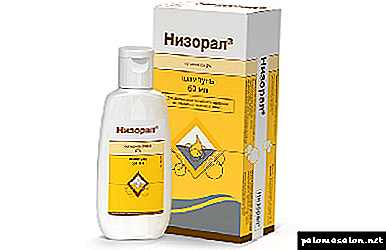 Nizoral shampoo. When using this drug for 2-4 weeks, you can reduce the amount of dandruff, reduce itching. The shampoo contains ketoconazole, 2%, it has an antimycotic effect, reduces the growth of fungi.
Nizoral shampoo. When using this drug for 2-4 weeks, you can reduce the amount of dandruff, reduce itching. The shampoo contains ketoconazole, 2%, it has an antimycotic effect, reduces the growth of fungi.- Skin cap. As part of this drug, activated zinc pyrithione. Preparations of this type have an antimicrobial, antifungal effect. Shampoo reduces skin inflammation, dries oozing foci.
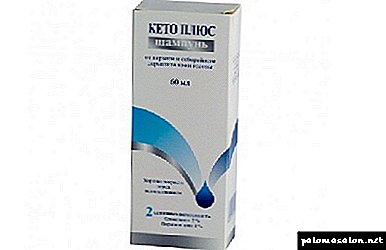 Keto plus The complex agent contains both ketoconazole and zinc pyrithione. Medicinal shampoo reduces flaking of the skin, helps get rid of dandruff, has antipruritic and antifungal effects.
Keto plus The complex agent contains both ketoconazole and zinc pyrithione. Medicinal shampoo reduces flaking of the skin, helps get rid of dandruff, has antipruritic and antifungal effects.- Sebiprox. It has antimycotic, fungicidal action. It has exfoliating properties. This type of drug should be used twice a week. When washing the head, shampoo is applied twice, the hair and scalp is massaged for 5 minutes, then the product is washed off. A positive effect can be achieved in a month.
Convenient use of shampoos containing tar. Tar shampoo, like tar soap, helps to cope with dandruff, reduces head itching.
It can be used alternating with antifungal shampoos.
It is important to maintain facial skin hygiene. It is not necessary to wash with tap water, it is better to use medicinal cleansers, foams and gels for the face with antiseptic properties.
Tar cleansing soap is good for skin cleansing. This remedy has an anti-inflammatory, regenerating effect. It can be used with every water treatment.
Skin treatment is performed with salicylic acid. It has an antimicrobial effect, helps to exfoliate dead skin cells, promotes regeneration of the scalp, face.
Skin care products
Even if you constantly use a special shampoo, tar soap, this may not be enough to eliminate the disease. In such cases, you need to find an effective ointment (or cream) for seborrheic dermatitis.
Creams and ointments with antimycotic effect are primarily used for seborrhea.
- Suitable for application to the skin Nizoral-cream containing ketoconazole, which inhibits the growth of fungi. The drug is applied to the lesions with a thin layer once a day, the treatment should be made 2-4 weeks.
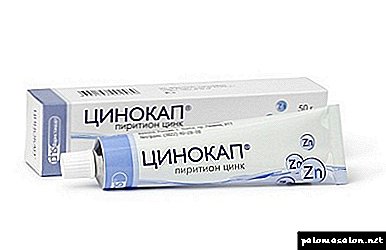 Cream and aerosol Zinocap. These drugs are used at different stages of the disease. In acute form, with soak, it is better to use an aerosol. In addition to the antifungal component, it contains ethyl alcohol, which has a drying, anti-inflammatory effect. For moderately acute inflammation, you can use Zinocap cream. It contributes to the regeneration of the skin, as in the presence of dexpanthenol.
Cream and aerosol Zinocap. These drugs are used at different stages of the disease. In acute form, with soak, it is better to use an aerosol. In addition to the antifungal component, it contains ethyl alcohol, which has a drying, anti-inflammatory effect. For moderately acute inflammation, you can use Zinocap cream. It contributes to the regeneration of the skin, as in the presence of dexpanthenol.- Lamicon. Available in the form of ointment, spray and even tablets. It has antifungal effects. Ointment can be applied on the chest, face. It reduces the development of seborrheic dermatitis.
Effective can be considered a drug for seborrheic dermatitis containing corticosteroids, if seborrhea is complicated by eczema. It is possible to use hormonal agents for a short period of time in order to avoid addiction and thinning of the skin.
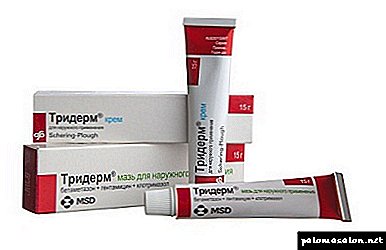 For these purposes, suitable Triderm. It has antimycotic, anti-inflammatory, antibacterial effect.
For these purposes, suitable Triderm. It has antimycotic, anti-inflammatory, antibacterial effect.- Belosalik ointment. In the composition of the drug salicylic acid and betamethasone. If treatment is made with this drug, itching, inflammation of the skin is reduced in the patient. Betamethasone has a pronounced antiallergic effect.
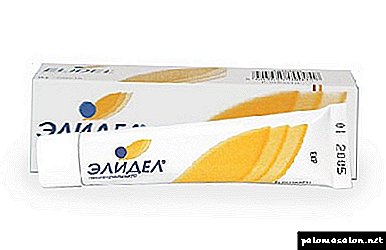 Cream Elidel has anti-inflammatory, antipruritic effect. This medicine can be used for a long time, the drug is allowed for use from three months of life. The cream is applied in the morning and evening with a thin layer on the affected areas of seborrhea.
Cream Elidel has anti-inflammatory, antipruritic effect. This medicine can be used for a long time, the drug is allowed for use from three months of life. The cream is applied in the morning and evening with a thin layer on the affected areas of seborrhea.- Protopic ointment. This medicine has anti-inflammatory effect, promotes tissue regeneration. Apply at night, in a thin layer, you can use for three weeks.
- Sulfur, ichthyol ointment has peeling properties. These drugs are applied to the skin with pronounced peeling of the epidermis.
For the treatment of seborrheic dermatitis to occur more quickly, the patient needs to take vitamins:
 Vitamin A (retinol). Participates in the body's redox processes, affects protein synthesis in cell membranes, contributes to the normal functioning of the immune system.
Vitamin A (retinol). Participates in the body's redox processes, affects protein synthesis in cell membranes, contributes to the normal functioning of the immune system.- Vitamins of group B (thiamin, riboflavin, cyanocobalamin). They contribute to the normalization of metabolic processes in the body, are involved in protein synthesis, improve the body's oxygen consumption.
- Vitamin E (tocopherol acetate). Antioxidant. Promotes skin regeneration, has a softening effect on the epidermis, prevents the formation of excess sebum.
To relieve itching, with the manifestation of allergic reactions to the waste of fungi, you can use antihistamines. Suitable for this pill Zodak. They can take 1 pc. at bedtime, no longer than 1 month.
To improve the condition of the epidermis, UV treatments can be performed. Sun exposure is detrimental to fungi.
Preventive actions
To get rid of seborrheic dermatitis exacerbations, there is little use of drug-based external agents.
 For the effectiveness of therapy, the patient should:
For the effectiveness of therapy, the patient should:
- Observe the hygiene of the head and body.
- Maintain immunity by frequent walks in the fresh air.
- Eat right, do not abuse alcohol, cigarettes, too fatty and sweet food.
All medicinal procedures must be coordinated with your doctor. Even safe, at first glance, tar soap can dry out the skin. Only a specialist can determine how long the treatment should be done and the correct dosage of drugs.


 Nizoral shampoo. When using this drug for 2-4 weeks, you can reduce the amount of dandruff, reduce itching. The shampoo contains ketoconazole, 2%, it has an antimycotic effect, reduces the growth of fungi.
Nizoral shampoo. When using this drug for 2-4 weeks, you can reduce the amount of dandruff, reduce itching. The shampoo contains ketoconazole, 2%, it has an antimycotic effect, reduces the growth of fungi. Keto plus The complex agent contains both ketoconazole and zinc pyrithione. Medicinal shampoo reduces flaking of the skin, helps get rid of dandruff, has antipruritic and antifungal effects.
Keto plus The complex agent contains both ketoconazole and zinc pyrithione. Medicinal shampoo reduces flaking of the skin, helps get rid of dandruff, has antipruritic and antifungal effects. Cream and aerosol Zinocap. These drugs are used at different stages of the disease. In acute form, with soak, it is better to use an aerosol. In addition to the antifungal component, it contains ethyl alcohol, which has a drying, anti-inflammatory effect. For moderately acute inflammation, you can use Zinocap cream. It contributes to the regeneration of the skin, as in the presence of dexpanthenol.
Cream and aerosol Zinocap. These drugs are used at different stages of the disease. In acute form, with soak, it is better to use an aerosol. In addition to the antifungal component, it contains ethyl alcohol, which has a drying, anti-inflammatory effect. For moderately acute inflammation, you can use Zinocap cream. It contributes to the regeneration of the skin, as in the presence of dexpanthenol. For these purposes, suitable Triderm. It has antimycotic, anti-inflammatory, antibacterial effect.
For these purposes, suitable Triderm. It has antimycotic, anti-inflammatory, antibacterial effect. Cream Elidel has anti-inflammatory, antipruritic effect. This medicine can be used for a long time, the drug is allowed for use from three months of life. The cream is applied in the morning and evening with a thin layer on the affected areas of seborrhea.
Cream Elidel has anti-inflammatory, antipruritic effect. This medicine can be used for a long time, the drug is allowed for use from three months of life. The cream is applied in the morning and evening with a thin layer on the affected areas of seborrhea. Vitamin A (retinol). Participates in the body's redox processes, affects protein synthesis in cell membranes, contributes to the normal functioning of the immune system.
Vitamin A (retinol). Participates in the body's redox processes, affects protein synthesis in cell membranes, contributes to the normal functioning of the immune system.
